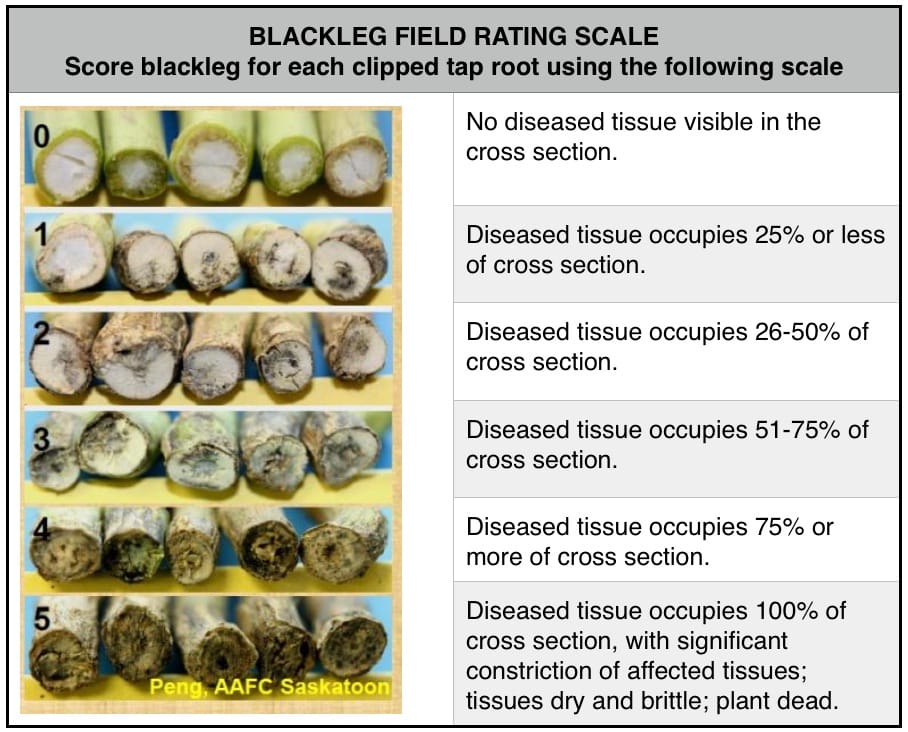
Many things can cause yields to be lower than expected. Crops that run out of nutrients may have significant biomass but smaller or fewer seeds in the pods. Moisture and other environmental issues — such as frost — could do the same.
Disease is another big factor. Plants may look healthy at first glance, but taking time to clip stems may reveal a widespread blackleg issue, for example. Ongoing research by Stephen Strelkov with the University of Alberta suggests that even low-severity blackleg — stem damage ratings of 2 — can cause yield loss up to 20%. Under good growing conditions, fields with an overall 2 rating may still yield 40 bu./ac., for example, which may not raise alarm bells for growers, but those fields perhaps could have yielded 50 bu./ac.
Use rain delays to check disease levels. Crop rotation and seed decisions are improved when growers and agronomists have a good handle on the disease situation. Blackleg levels were higher than expected in some areas this year, and clubroot continues to spread. Knowledge of the incidence and severity of these two diseases provides an important head start in keeping them under control.
Surveys before, during or just after swathing are the best times to cut stems for blackleg, dig up roots to check for galls or open stems for sclerotia.
Finding high levels of blackleg, clubroot or sclerotinia stem rot will influence choice of disease-resistant seed, crop rotation on specific fields and crop protection products.
Further reading:
How to rate a crop for blackleg
What to look for when disease scouting
Post-swath disease scouting
Clubroot shift and crop rotation
Blackleg management tips
Rotations and risk management

